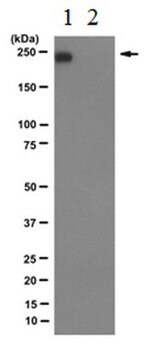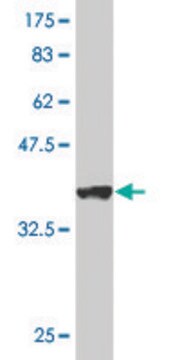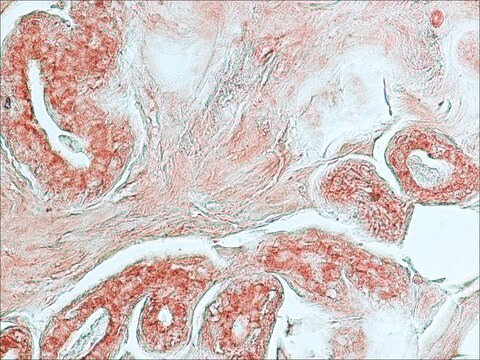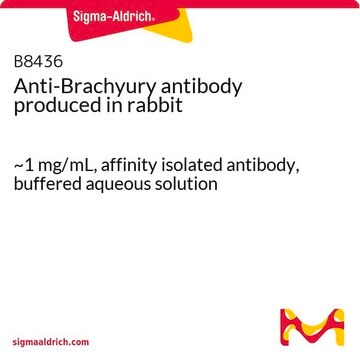04-1570
Anti-RNA polymerase II subunit B1 (phospho-CTD Ser-7) Antibody, clone 4E12
clone 4E12, from rat
Synonyme(s) :
DNA-directed RNA polymerase II A, DNA-directed RNA polymerase II largest subunit, RNA polymerase II 220 kd subunit, DNA-directed RNA polymerase II subunit A, DNA-directed RNA polymerase III largest subunit, RNA polymerase II subunit B1, RNA-directed RNA
About This Item
Produits recommandés
Source biologique
rat
Niveau de qualité
Forme d'anticorps
purified immunoglobulin
Type de produit anticorps
primary antibodies
Clone
4E12, monoclonal
Espèces réactives
mouse
Réactivité de l'espèce (prédite par homologie)
human (based on 100% sequence homology)
Technique(s)
ChIP: suitable
ELISA: suitable
western blot: suitable
Isotype
IgG1κ
Numéro d'accès NCBI
Numéro d'accès UniProt
Conditions d'expédition
wet ice
Modification post-traductionnelle de la cible
phosphorylation (pSer7)
Informations sur le gène
human ... POLR2B(5431)
Description générale
Spécificité
Immunogène
Application
Epigenetics & Nuclear Function
Epigenetics & Nuclear Function
Transcription Factors
RNA Metabolism & Binding Proteins
Qualité
Western Blot Analysis: 0.25 µg/ml of this antibody detected RNA polymerase II CTD on 10 µg of γ-PPase untreated and treated NIH/3T3 cell lysates.
Description de la cible
Forme physique
Stockage et stabilité
Remarque sur l'analyse
γ-protein phosphatase (γ-Ppase) untreated and treated NIH/3T3 cell lysates
Autres remarques
Clause de non-responsabilité
Vous ne trouvez pas le bon produit ?
Essayez notre Outil de sélection de produits.
Code de la classe de stockage
12 - Non Combustible Liquids
Classe de danger pour l'eau (WGK)
WGK 1
Point d'éclair (°F)
Not applicable
Point d'éclair (°C)
Not applicable
Certificats d'analyse (COA)
Recherchez un Certificats d'analyse (COA) en saisissant le numéro de lot du produit. Les numéros de lot figurent sur l'étiquette du produit après les mots "Lot" ou "Batch".
Déjà en possession de ce produit ?
Retrouvez la documentation relative aux produits que vous avez récemment achetés dans la Bibliothèque de documents.
Notre équipe de scientifiques dispose d'une expérience dans tous les secteurs de la recherche, notamment en sciences de la vie, science des matériaux, synthèse chimique, chromatographie, analyse et dans de nombreux autres domaines..
Contacter notre Service technique







